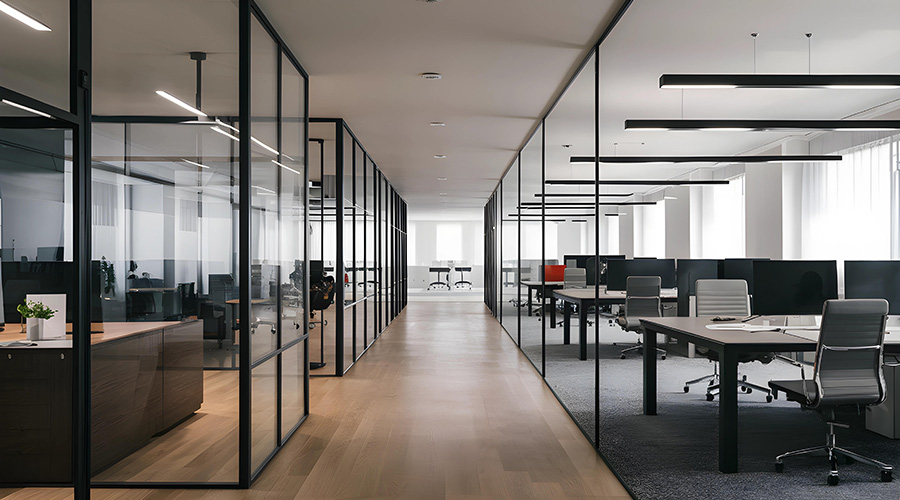Losing Private Offices: Change Management Can Prevent Negative Impacts
OTHER PARTS OF THIS ARTICLEPt. 1: This Page
Recently I got the results of a workspace survey conducted by Building Operating Management. They’re pretty interesting on space and attitudes to space changes. I work in “change management” and take steps to prevent negative impacts of changes in workspace. (Though a recent client asked me not to use the words “change” and “management” and particularly not together!) When I see a survey result that notes 44 percent of respondents had reduced the percentage of workspace devoted to private offices my mind goes to high alert. I am not at all surprised when I see that 57 percent of respondents say occupants are “wary” about this, and once they’ve moved in 53 percent are reported to be “neutral” about it and 24 percent are “unhappy.”
Neither am I surprised at the list of choices presented to respondents to explain the reasons for their concerns following the move: acoustics/distractions, loss of perceived status, insufficient space for storage, insufficient work area, loss of privacy, other (degrading, loss of meeting space, visual distractions). We know all these present difficulties. We could more or less predict the responses without going through a survey.
Yet here’s where I am surprised. We know that changing workspace is disruptive and causes anxiety and concern, but what we don’t know is what that costs in terms of drags on business performance. How many organizations actively measure the direct and indirect outcome costs of the impact of workspace change on profit, productivity, and organizational performance?
When workspace changes things happen, regardless of how stylish the new space is, you are more likely to see negative impacts than positive impacts. The negative impacts include employee turnover, productivity drops, “presenteeism,” passive-aggressive behavior, self-perception/esteem dips (particularly if an “entitlement” has been removed), and employee stress — all are costly. The reduction in facilities costs made by changing the workspace are likely to be offset by the increase in these types of costs — but it would be good to have this surmise evidenced.
The sad thing is that these negative impacts are all avoidable costs if only the organizational leaders thought more presciently about the whole organizational system, starting with the notion that workspace is a strategic asset and not just a cost to be borne, and started building in this attitude at the inception of the project. Thinking of workspace as part of the organizational system means looking at the interactions between the various components. For example if there is a desire to “change the culture” of the organization — and in the Building Operating Management survey 39 percent of respondents said this was what they wanted their workspace change to accomplish — then what other organizational elements have to support this desire?
Here’s a healthcare example (a client I’m working with). They’re moving location, becoming open plan, expanding services, and have a new CEO. They want to become fully patient-centric and are using the move opportunity to totally redesign their patient flow/experience — the way they interact with, and treat patients — in order to better meet the challenging world of healthcare. The radically new patient flow process means designing the workspace to reflect it, reworking the IT associated with new business processes, assessing the staffing required to operate the new business model in the new space, providing the management/supervisory/employee training needed to inform about the logistics of the new space and the different ways of working in it, changing the reward, recognition and performance management systems to reflect new ways of working in the new space, and changing the measurement and monitoring of performance. All of this began almost as the building was being bought, and is being done with involvement and participation of workforce members.
In this instance the workspace is part and parcel of the way business will be done, not just a space in which to do it. If only other workspace projects began with the specific overall business goals in mind and not just a cost cutting or vague "culture change" remit. It’s not hard to do and the investment in the process is worth the costs it saves in the end. I know because I’m working with two other clients who have recently moved to new space and have at this point asked me to come in and help them handle the low staff morale, increasing retention issues, and general staff dissatisfaction about the work (albeit in lovely space!).
You can learn more about the healthcare organization in a future issue of Building Operating Management.
Naomi Stanford, PhD, is organizational design director for NBBJ. She consults on aspects of organization design and culture change with various clients in commercial, government, and non-profit sectors in, the United States and Europe. She is the author of several books on organizational design and corporate culture, including Organizational Health. The views above presented are her own and do not represent the views of NBBJ. She can be reached at NStanford@nbbj.com.
Related Topics:











